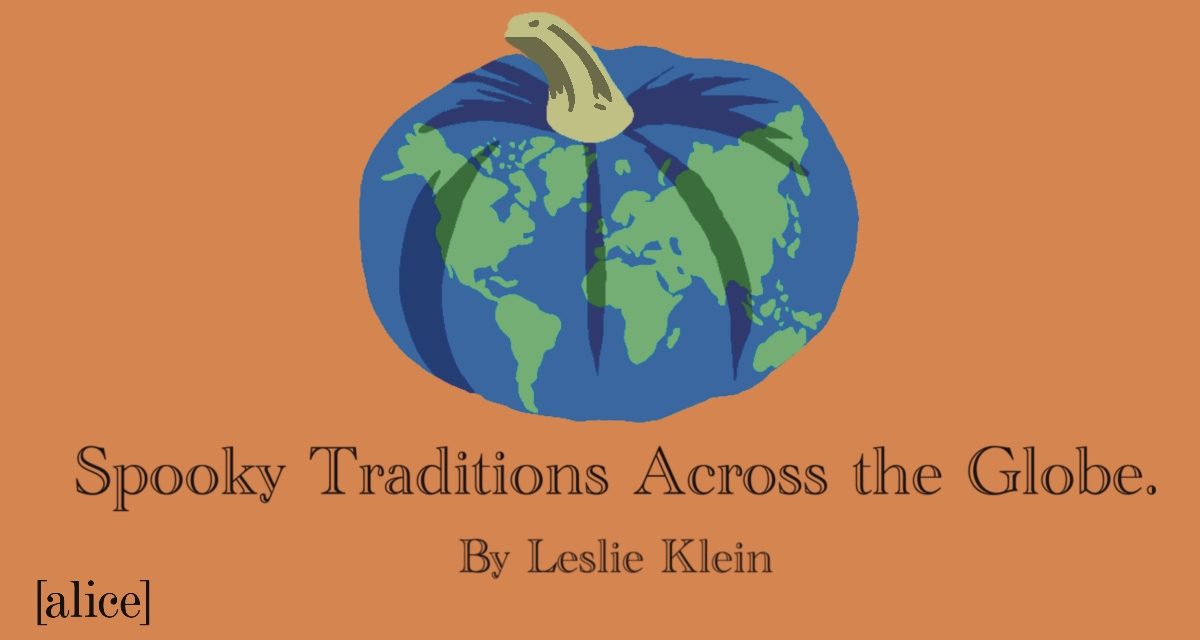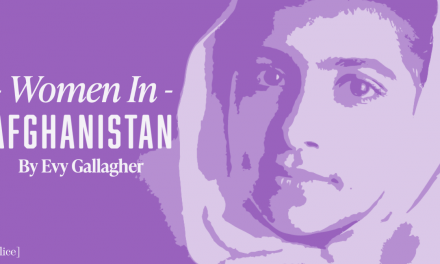Spooky Traditions Across the Globe
Leslie Klein | Features Editor
In the United States, Halloween is the one night out of the year where individuals can dress up, eat buckets of candy and be whoever they want to be. Beginning October first, many people consider the entire month ‘spooky season’ meaning it is time to carve pumpkins, attend costume parties and take in the Fall spirit. While the United States celebrates Halloween traditions every year, other countries have their own way of celebration their versions of ‘spooky season.’
Germany
Over the last two and a half decades, individuals in Germany have begun expressing interest in some of the more typical Halloween traditions we see all over the United States. These traditions include pumpkin festivals, Halloween parties and dressing up. While not all areas in Germany are as excited about Halloween as others, those that are spend their holiday much like people across the United States. Trick or treating takes place in some schools as well. Liam Schäepers, a student at the University of Alabama says, “In my school we dressed up for Halloween whenever it was during a week day.” While in the United States dressing up ranges from princesses to monsters, Germany takes pride in the scary factor they incorporate into their costumes. Along with their spooky traditions they have a festival that is honorably scary, Castle Frankenstein. This takes place at Burg Frankestein and works similarly to a haunted house. It is the perfect place for individuals to get a good scare.
China
In China, Halloween is not quite as celebratory. Often, big cities such as Beijing will place Halloween decorations outside of storefronts, most often when the stores sell western products. However, aside from big cities partaking in small Halloween traditions, it is likely that away from the city lights, there will be little to no trace of this holiday. While they seem to have little interest in Halloween, they do celebrate the Qingming Festival. This festival is also considered ‘tomb sweeping day’ as they honor the dead by clearing and sweeping their loved ones’ tombs. This celebration takes place 15 days after the Spring Equinox, landing within the first week of April each year. Sometimes individuals will burn money over the tombs in order to allow those that have passed the ability to spend money in the afterlife. Once the maintenance performed on tombs is over, the rest of the day is set aside for families to spend time together, continuing to honor the dead by enjoying their day.
Guatemala
Guatemala has a Halloween tradition unlike any other. Men will dress up as the devil and chase children through the streets, playfully of course. However, they also have a Day of the Dead celebration, otherwise known as Barriletes Gigantes, or “Giant Kites” festival. This celebration takes place all over Guatemala over the course of the first couple of days in November. According to Vanessa Campa, author of Giant Kite Festival, “The festival…[brings] to life one of the most vibrant and fruitful events experienced in Guatemala.” During this time, individuals will fly giant kites, often hand painted, over the tombs of their loved ones. The reasoning behind the kites is to represent a bridge between the living and the dead.
Ireland
Halloween in Ireland is more than a big deal, it is where the holiday originated in the first place. In this case, the real question is, why did Halloween become a day where monsters and horror are so lightly permitted? “An impulse in Irish tradition is to fearlessly celebrate in the face of unsettling things not fully understood,” according to Marion McGarry, author of Why Halloween is celebrated with such spirit in Ireland. Although Halloween is seen as only a scary day for monsters and ghouls, it began with a more spiritual aspect. People saw Halloween as a time for manifestation and things of the sort. It was said that if an apple or a cabbage leaf was placed under one’s pillow, they might have a dream of their future spouse. Another tale that was believed is that individuals would dress up as “fellow-ghouls” in an attempt to blend in with other spirits, as it was believed there were spirits roaming. That is not the extent of it though, they would create grotesque masks and change their names, voices and entire demeanors in hopes to make the roaming spirits understand that they were one of them. As there is much more to be said about the celebratory actions and the on-going traditions surrounding Halloween in Ireland, check out the previously linked article.
Spooky celebrations occur all around the world, each reflecting the collision of the living and the dead. These different traditions range from honoring the dead to scaring one another through terrifying tales and sinister scares. Learning about traditions across the world can allow us to see we are not that different from one another.
Leslie Klein is the Features Editor for Alice Magazine. She is a Junior studying Communications at The University of Alabama. She hopes to continue her work in magazines in the future, and is prepared to find her place.






